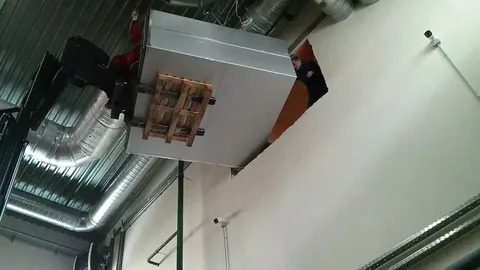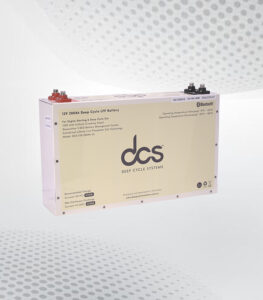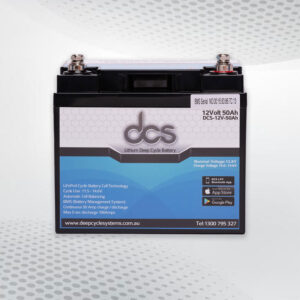In the quest for optimal home comfort and energy conservation, the HRV Heating System emerges as a vital innovation. These systems, often regarded as the epitome of modern heating technology, seamlessly combine energy efficiency with superior air quality management. Their rise in popularity is not unfounded, as they cater to the growing demand for sustainable living while maintaining indoor comfort. This blog explores the multifaceted advantages of HRV-Heating Systems, delving into their operation, efficiency, and contribution to environmental sustainability.
How HRV-Heating Systems Work
HRV-Heating Systems, known as Heat Recovery Ventilation systems, operate through a process of exchanging stale indoor air with fresh outdoor air. This exchange occurs in such a way that the heat from the outgoing air is captured and transferred to the incoming air, thus warming it before it enters the home. This mechanism ensures not only a constant influx of fresh air but also the retention of warmth, which diminishes the necessity for supplementary heating.
The systems incorporate sophisticated filters and heat exchangers that maximise the efficiency of heat transfer, ensuring minimal energy wastage. Through this balanced ventilation and heating approach, HRV-Heating Systems manage to sustain high indoor air quality while concurrently cutting down on heating expenses.
Energy Efficiency and Cost Savings
One of the standout attributes of HRV-Heating Systems is their remarkable energy efficiency. By reclaiming heat from the exhaust air, these systems dramatically reduce the dependence on additional heating sources. This innovative approach leads to a noticeable decrease in energy consumption, which directly translates to lower energy bills for homeowners. Traditional heating systems often run non-stop, regardless of the actual indoor or outdoor conditions.
In contrast, HRV-Heating Systems employ intelligent operation, adjusting their performance based on real-time temperature and air quality data. This ensures that energy is utilised only when necessary, avoiding unnecessary wastage. Over time, the cost savings accrued from reduced energy use make HRV-Heating Systems an economically sound investment.
Additionally, the diminished need for auxiliary heating helps extend the lifespan of primary heating units, further reducing maintenance and replacement costs. By optimising energy use and reducing expenditures, HRV-Heating Systems offer both immediate and long-term financial benefits, solidifying their reputation as a practical and cost-effective solution for modern homes.
Installation and Maintenance
The integration of HRV-Heating Systems into a home’s existing framework necessitates meticulous planning and professional expertise to achieve peak performance. This installation process involves linking the HRV unit to the current heating and ventilation systems, which can pose challenges, especially in older properties where infrastructure may need upgrading or modification.
Once operational, these systems are designed for ease of maintenance, primarily requiring routine cleaning or replacement of filters to uphold air quality and system efficiency. Occasional servicing by a qualified technician ensures that all components function correctly, thereby preserving the longevity and reliability of the system. By adhering to these maintenance protocols, homeowners can enjoy the full benefits of their HRV-Heating Systems with minimal ongoing effort.
Environmental Impact
HRV-Heating Systems stand out as a sustainable choice in modern home heating solutions. By efficiently recycling heat from exhaust air, they minimise the need for additional heating, thereby reducing overall energy consumption. This reduction in energy use directly correlates with lower greenhouse gas emissions, making HRV-Heating Systems a key player in environmental preservation efforts. Furthermore, these systems support the broader objective of sustainable living by promoting energy conservation without compromising indoor air quality or comfort.
The advanced filters used in HRV units not only capture heat but also contribute to a healthier environment by filtering out pollutants and allergens, ensuring that the air released back into the atmosphere is cleaner. In addition to their inherent efficiency, the potential for integrating renewable energy sources further enhances the environmental benefits of HRV-Heating Systems. Solar panels or wind turbines can be utilised to power these systems, thereby decreasing reliance on non-renewable energy sources and reducing carbon footprints even further.
HRV-Heating Systems also contribute to reducing urban heat islands by managing indoor temperatures more effectively and lessening the heat expelled into the environment. This balanced approach to ventilation and heating reduces the strain on power grids, particularly during peak usage times, promoting a more stable and sustainable energy infrastructure. Overall, the adoption of HRV-Heating Systems aligns seamlessly with the ongoing global transition towards greener, more energy-efficient living practices, offering a pragmatic solution for those committed to reducing their environmental impact.
HRV Ventilation System: Improved Indoor Air Quality
The significance of indoor air quality cannot be overstated, particularly when considering the myriad health benefits associated with HRV Ventilation System. By facilitating the continuous exchange of indoor and outdoor air, these systems play a crucial role in reducing indoor pollutants and allergens. The sophisticated filtration systems embedded within HRV units capture a wide array of particulates, including dust, pollen, and other microscopic contaminants. This results in significantly cleaner air, which is particularly beneficial for individuals with respiratory conditions such as asthma or allergies.
Moreover, the consistent airflow maintained by HRV-Heating Systems effectively mitigates the risks associated with excessive moisture, such as mould growth and condensation. These issues are commonplace in inadequately ventilated homes and can contribute to an unhealthy living environment. By expelling humid air and introducing fresh air, HRV-Heating Systems create a balanced indoor climate that is both comfortable and health-conscious.
The ongoing circulation of fresh air also ensures that odours and volatile organic compounds (VOCs) are swiftly removed, further enhancing indoor air quality. Consequently, the implementation of an HRV-Heating System serves as a proactive measure in promoting a healthier and more pleasant home environment, aligning with contemporary standards of living and wellbeing.
User Comfort and System Control
Modern HRV-Heating Systems are meticulously engineered to prioritise user comfort through precise climate control. These systems offer sophisticated interfaces that allow users to fine-tune their indoor environment according to personal preferences. Advanced HRV units are integrated with smart technologies, enabling remote operation via mobile devices and seamless interaction with home automation ecosystems. This technological advancement ensures that users can adjust temperature and ventilation settings from virtually anywhere, providing unparalleled convenience and comfort.
The incorporation of smart sensors in HRV-Heating Systems further enhances their capability to maintain optimal indoor conditions. These sensors monitor variables such as indoor and outdoor temperatures, humidity levels, and air quality, automatically adjusting system operations to sustain a consistent and comfortable living environment. The adaptive nature of these systems means that they respond proactively to changes in the environment, minimising the need for manual adjustments.
Furthermore, some HRV-Heating Systems come equipped with user-friendly touchscreens and voice control features, making it easy for individuals of all ages to navigate and operate the system. By offering such versatility and ease of use, these systems significantly improve the overall user experience. The integration of these advanced control features underscores the commitment to enhancing comfort and convenience within modern homes, aligning with the evolving demands of contemporary living.
Future Trends in HRV-Heating Technology
Future developments in HRV-Heating Systems are expected to focus on enhancing their integration with cutting-edge smart home technologies. Advances in artificial intelligence and machine learning will enable these systems to anticipate user needs more accurately, optimising energy use and maintaining ideal indoor conditions with minimal intervention. Enhanced connectivity will allow HRV units to communicate seamlessly with other smart devices, creating a more cohesive and efficient home automation ecosystem.
In terms of materials and design, next-generation HRV-Heating Systems are likely to incorporate more sustainable and durable components, increasing their lifespan and reducing the environmental footprint of manufacturing and disposal. Innovations in heat exchange technology are set to improve the efficiency of these systems further, making them even more effective in heat recovery and ventilation.
The rising trend of integrating renewable energy sources with HRV-Heating Systems is poised to gain momentum. Future models may feature built-in compatibility with solar panels or wind turbines, allowing homeowners to harness green energy effortlessly. Additionally, compact and modular designs will make installation more straightforward, even in properties with limited space, broadening the accessibility and appeal of these systems.
Benefits for Home Comfort
HRV-Heating Systems offer significant advantages for home comfort, seamlessly integrating advanced technology with sustainable practices. These systems ensure a continuous flow of fresh, filtered air while efficiently maintaining optimal indoor temperatures. The reduction in reliance on auxiliary heating methods results in a more stable and consistent warmth, enhancing overall comfort levels within the home. The sophisticated control features and smart sensors embedded in HRV-Heating Systems allow for precise climate management, tailored to individual preferences, thereby elevating the living experience.
Additionally, the balanced ventilation provided by HRV-Heating Systems effectively mitigates indoor air pollutants, moisture, and odours, fostering a healthier and more pleasant environment. The reduction in allergens and maintenance of ideal humidity levels contribute to improved wellbeing, particularly for those with respiratory conditions. The incorporation of smart technologies enables seamless operation and adjustment, offering an unparalleled level of convenience and user satisfaction. Overall, HRV-Heating Systems represent a harmonious blend of comfort, efficiency, and health, meeting the diverse needs of contemporary households.
Conclusion
In conclusion, HRV Heating System significantly enhances energy efficiency in buildings by recovering and reusing heat from exhaust air. By maintaining indoor air quality while minimizing energy loss, these systems contribute to reduced heating costs and lower carbon footprints. As technology advances, HRV systems are becoming more effective, integrating smart controls and improved designs, making them a valuable investment for sustainable building practices. Overall, they represent a crucial step towards energy-efficient and comfortable living environments.
FAQs
How does an HRV Heating System work?
HRV Heating System operates by exchanging stale indoor air with fresh outdoor air while recovering heat from the outgoing air. This process helps maintain indoor temperatures without significant energy loss, making heating and cooling more efficient.
What is the energy savings associated with HRV systems?
Modern HRV systems can significantly reduce energy costs by recovering up to 90% of the heat from outgoing air. This allows homeowners to use less energy for heating, leading to lower utility bills and a reduced carbon footprint.
Can HRV systems improve indoor air quality?
Yes, HRV systems enhance indoor air quality by continuously supplying fresh air and removing pollutants, humidity, and odors. This helps create a healthier living environment without compromising energy efficiency.
Are there specific maintenance requirements for HRV systems?
Regular maintenance is essential for optimal performance. This includes cleaning or replacing filters, checking the heat exchanger, and ensuring that ducts are clear. Proper maintenance can enhance efficiency and prolong the system’s lifespan.
How do HRV systems compare to traditional ventilation methods?
Unlike traditional systems that may draw in cold outdoor air without heat recovery, HRV systems provide a more efficient solution by retaining a significant amount of heat. This leads to better energy efficiency, lower heating costs, and improved indoor comfort.
| Related Business Listings |
| Contact Directory |
| Local Business Profiles |




